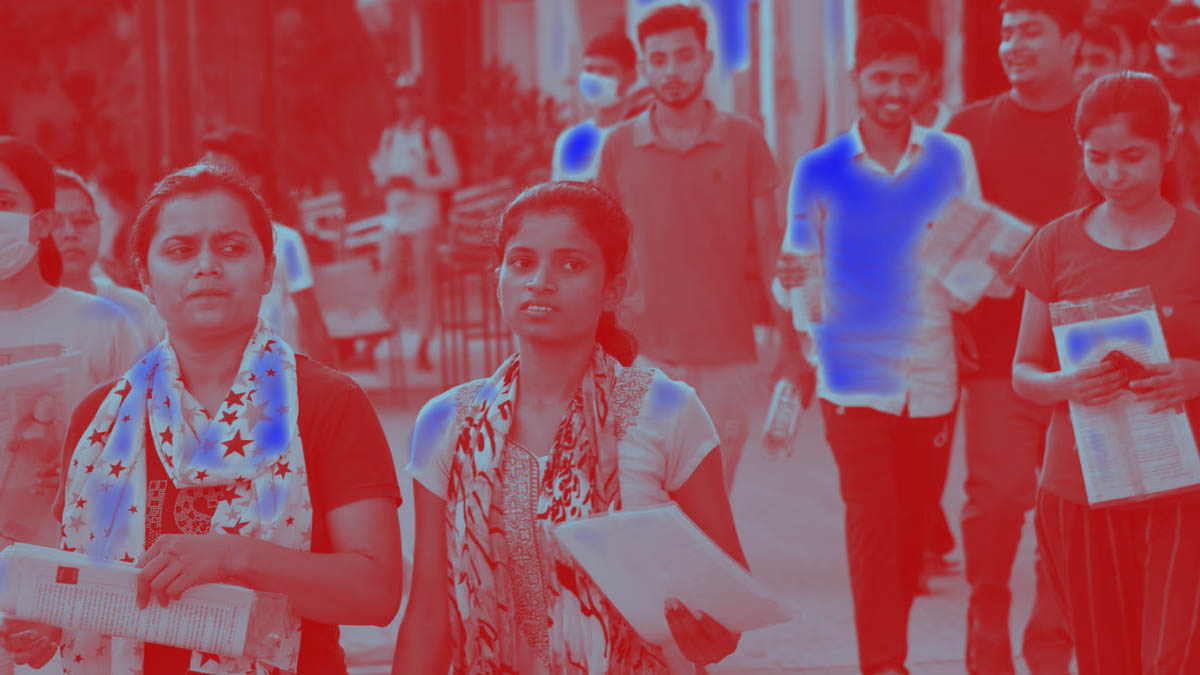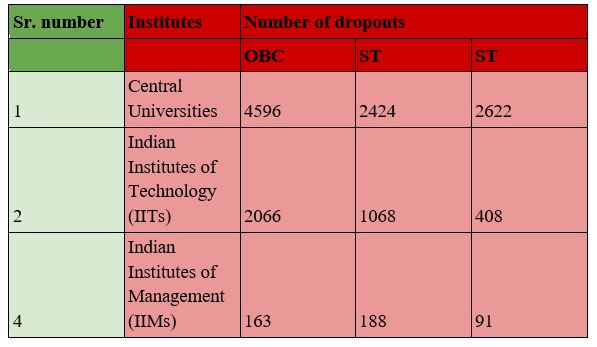On December 4, responding to multiple queries regarding the challenges faced by SC, ST, and OBC students in higher education institutions and private schools, Minister Subhas Sarkar in this winter session of the Lok Sabha presented statistics that reveal the harrowing figures about dropouts by marginalised students studying in central universities, Indian Institutes of Technology, and Indian Institutes of Management.
The response by BSP MP, Ritesh Pandey, and the government detailed that over the last five years, a staggering 13,626 SC, ST, and OBC students have discontinued their education. The data reveals that 4,596 OBC candidates, 2,424 SC, and 2,622 ST students chose to drop out of Central Universities during this period. Furthermore, the statistics show that in the renowned institutes such as IITs, 2,066 OBC candidates, 1,068 SC, and 408 ST students decided to discontinue their educational pursuits. Similarly, at the esteemed IIMs, 163 OBC, 188 SC, and 91 ST candidates had dropped out.
He further gave the reason for the dropouts, stating that migrating to other courses is an occurrence, “In the Higher Education sector students have multiple options and they choose to migrate across institutions and from one course/programme to another in the same institution. The migration/withdrawal if any, is mainly on account of securing seat by the students in other departments / institutions of their choice or on any personal ground.” Furthermore, the ministry has no record of the data related to National Law Universities, as these institutes come under state legislature.
Furthermore, addressing concerns of dropouts in the university, the minister replied, “In order to proactively address any issues of SC/ST students, institutes have set up mechanisms such as SC/ST students’ cells, Equal Opportunity Cell, Student Grievance Cell, Student Grievance Committee, Students Social Club, Liaison officers, Liaison Committee etc. Further, University Grants Commission (UGC) has issued instructions from time to time for promoting equity and fraternity amongst students.” He also stated that the government has initiated several measures to address the issue. These include fee reductions, the establishment of additional educational institutes, scholarship programs, and access to national-level scholarships. Sarkar spoke about specific initiatives by the government like the ‘waiver of tuition fees in IITs’ and the provision of national scholarships under the Central Sector Scheme, aiming to support the welfare of SC/ST students.
The complete answer can be viewed here (1):
Furthermore, on December 4 the education minister responded to questions posed by A Raja, an MP from the DMK party. He had asked the minister questions on the discrimination records against Dalits and Tribals in private schools that was reported in the past 3 years, specific regulations by the government or by the CBSE to address said discrimination, and lastly the details of the circulars sent by the central government to private schools regarding instances and redressal of discrimination against these students.
The government responded by saying that Section 12(1)(c) of the RTE Act 25 % of seats in private schools are reserved for students belonging to disadvantaged groups or economically weaker sections, and furthermore, that the NEP 2020 has a provision that states it necessary for special attention to be given to reduce educational inequities pertaining to ST and SC groups. Interestingly, what the minister did not provide here was an answer to the question on how many instances of discrimination were noted against ST and SC students in private schools in the last three years.
The presence of marginalised students in universities has already presented dismal figures. According to the Ministry of Education’s report for the academic year 2020–21 earlier this year, it was revealed that amongst India’s 4.13 crore total registered students in universities about 14.2% belonged to the Scheduled Caste category, 5.8% to the Scheduled Tribe category, and 35.8% belonged to the Other Backward Class groups.
In addition to student demographics, a concern emerges in the realm of teachers as well as responding to a query in the Lok Sabha, Minister of State for Education Subhash Sarkar earlier this revealed until April 1, 2023 India’s central universities have only on vice-chancellor from the SC community, one from the ST community, and about five from the OBC communities, revealing that all is not too well for teachers from marginalised communicates as well and revealed that in 45 central universities in India.
The complete answer can be viewed here (2):
Related:
Recent reports suggest that higher education enrolment in Muslims continues to decline
SC deems caste-based discrimination in higher education system to be a ‘very sensitive matter’
Towards Quality Universal and Accessible Education for All! Protests against NEP 2020

